Exclusive Photo Essay: The Mausoleum of Pir Shams in Multan, Pakistan, Through the Lens of Malik Mirza
By MALIK MIRZA
Special to Simergphotos
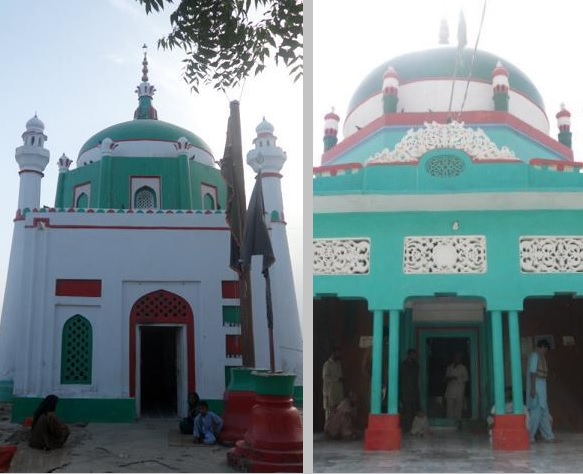
Ever since I went to Uch Shariff (see map, below, right) in the Province of Punjab to see the mausoleums of Pir Sadardin and his son Pir Hassan Kabirdin, I had a deep desire to visit the mausoleum of their immediate ancestor Pir Shams. It is located in Multan, about 140 kms north of Uch Shariff. Finally, after many years, I got the chance to visit the historical site during a trip related to a project I was working on.

Multan is called the city of saints. Besides the mausoleum of Pir Shams, there are mausoleums and tombs of Hazrat Baha-ud-Din Zakaria, Hazrat Shah Gardez, Hazrat Musa Pak Shaheed and Hafiz Muhammad Jamal Multani, among others. For readers, it may be interesting to note that Multan is one of the cities in Pakistan in which there is extreme heat. Such heat is attributed to one of the miracles that Pir Shams is said to have performed in Multan. The miracle is described on a large board which is shown further down this post.

The mausoleum holds its own annual festival called Urs from June 1 to June 3. In Sufi terminology, Urs means a marriage. It signifies the day of the passing of a saint, which is celebrated as marriage between the physical and spiritual. The 3 days of the festival are designated as follows: day 1 for the bathing of grave; day 2 for ‘sama’ (singing of qawali/hymns); and day 3 for prayers.
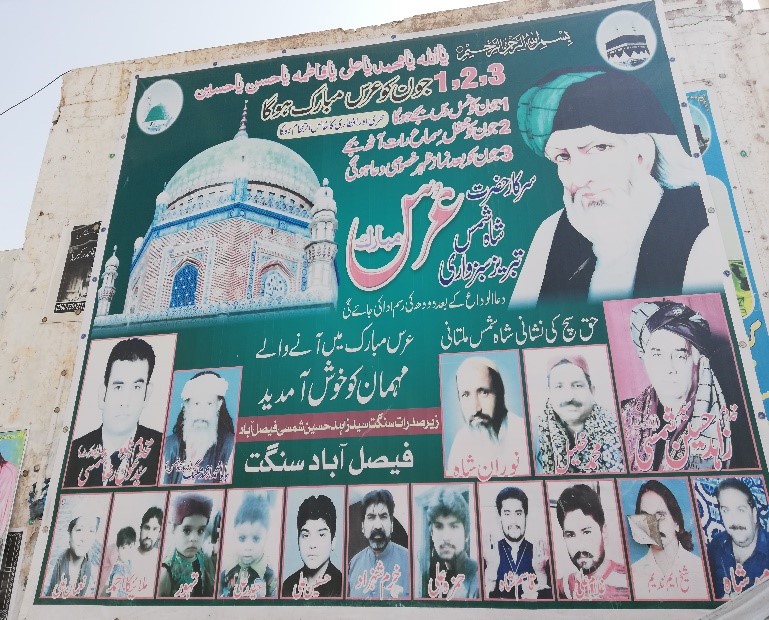
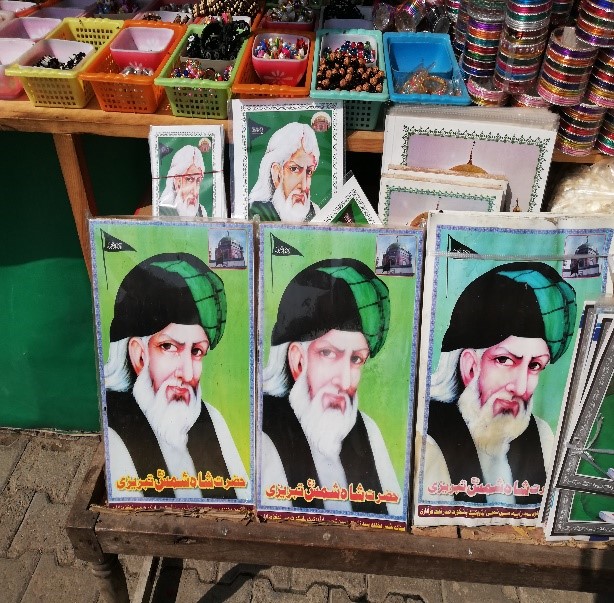
Pir Shams is revered as a Shia Pir who converted people to Islam when he arrived. The board says: “Haq Sach kee nishanee – Pir Shah Shams Multani” meaning: Pir Shams of Multan is a symbol of truth.
The Pir is depicted in books and picture cards that are available in shops surrounding the mausoleum.
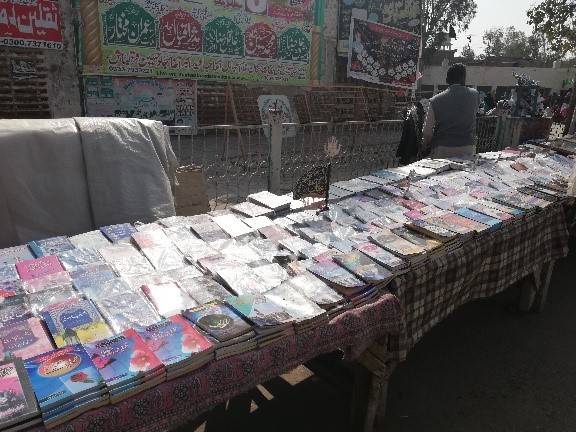
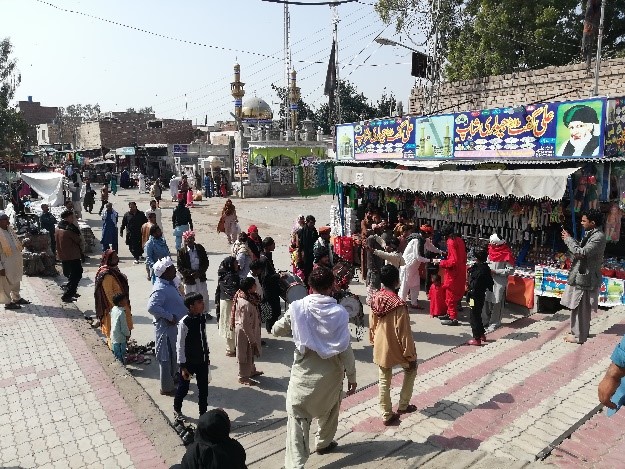
All visitors have to pass through a security gate to enter. Before the security gate and entrance to the mausoleum, there are different stores selling souvenirs related to the mausoleum. A wedding hall in the area is designated with the name ‘shams marriage club’.
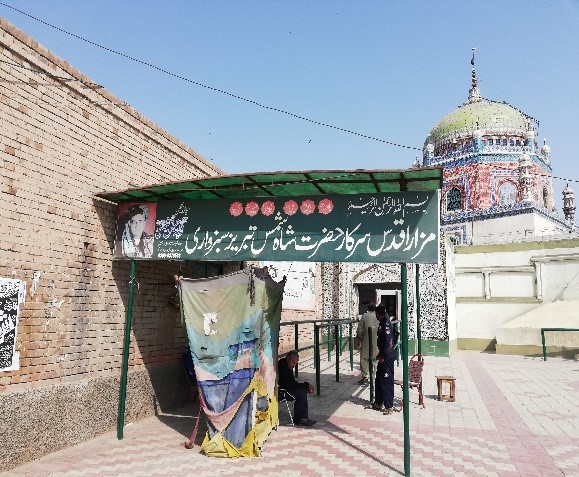
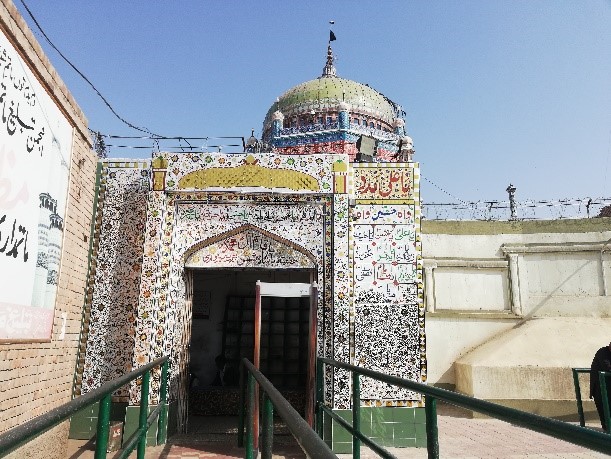
Immediately upon entering the mausoleum compound, a visitor is greeted by one or two musicians playing a religious song in praise of Holy Prophet Hazrat Muhammad (S.A.S.) or Hazrat Ali (A.S.).

Inside the mausoleum compound is a big white mosque and an area where pigeons move from one place to another. A vendor sells food for the pigeons and it is said that if the pigeons eat the food you provide them then your wish will be fulfilled.
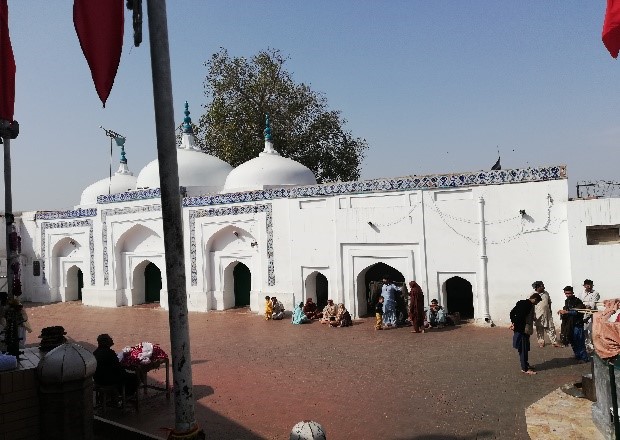
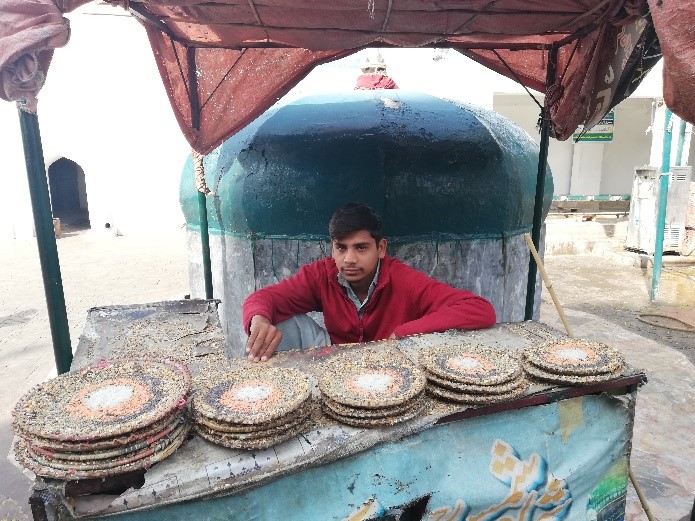
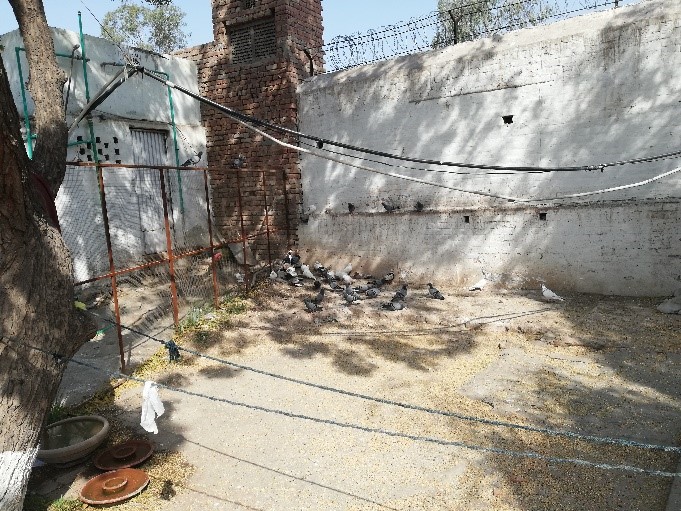
In the compound, you can lit the traditional ‘chiragh’ (candle), or lit an incense stick or buy some food for ‘Shah key kabutar’ (pigeons of Pir) or put some cloth on a tree to get your wishes fulfilled. People from all over the country, particularly Punjab are visible at the mausoleum, praying, meditating, singing or sitting silently watching the mausoleum building from the compound.
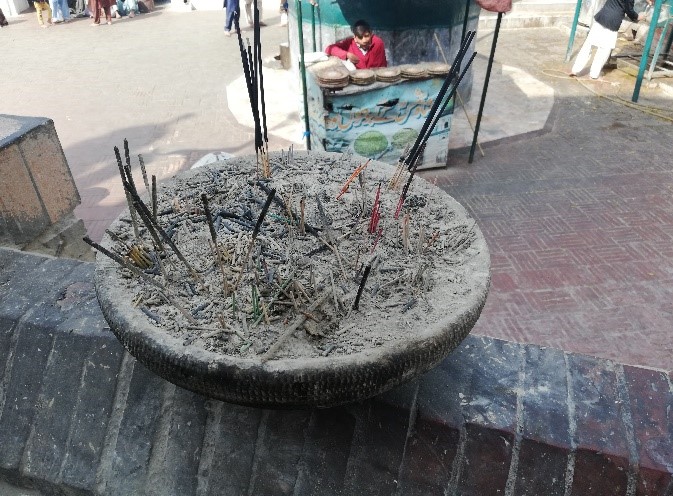
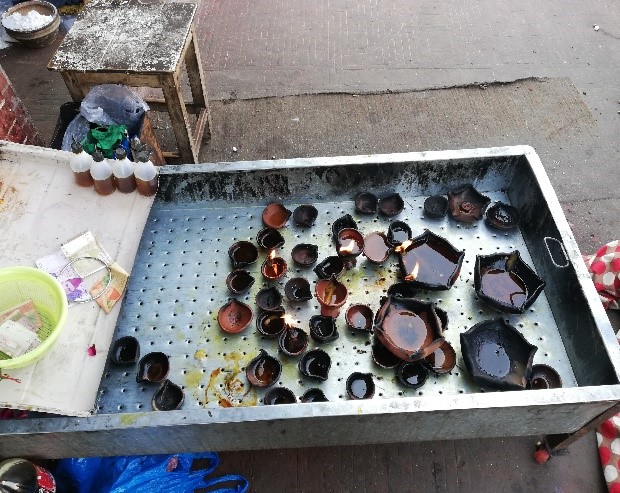
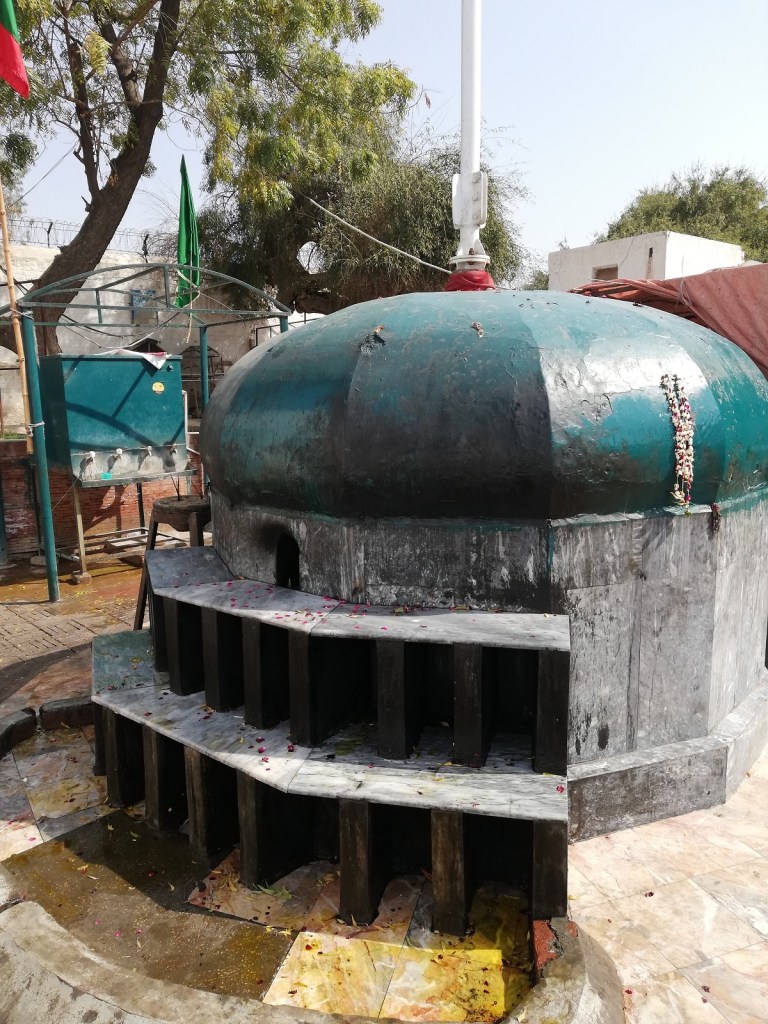
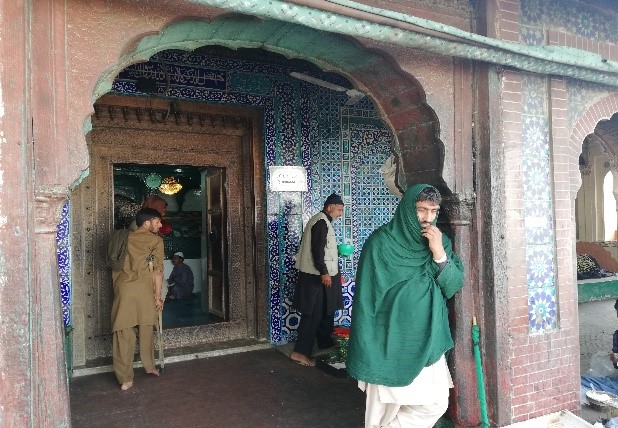
Inside the mausoleum, people pay their respect and homage to the Pir by humbly submitting the ‘chaddar’ or traditional piece of cloth to cover the grave or simply by touching the grave. It was interesting to note that there are two graves inside: one attributed to Pir Shams and second to his grandson.
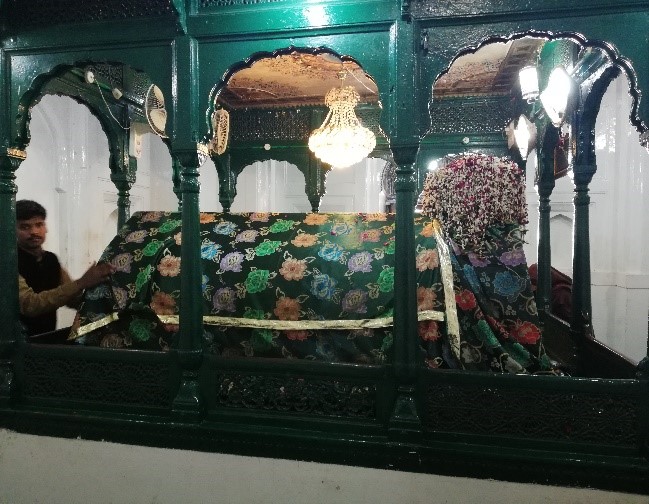
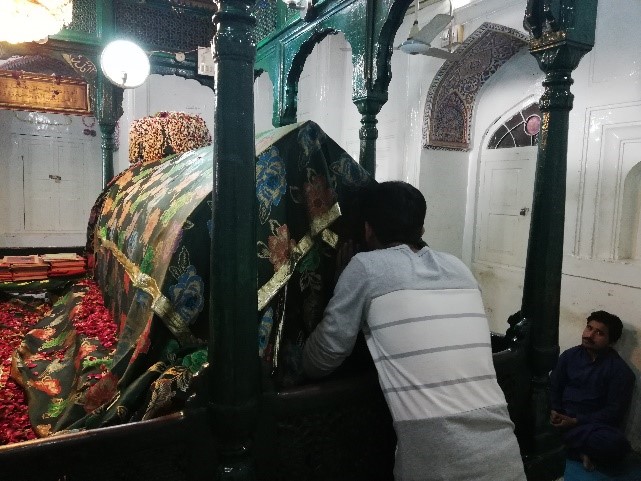
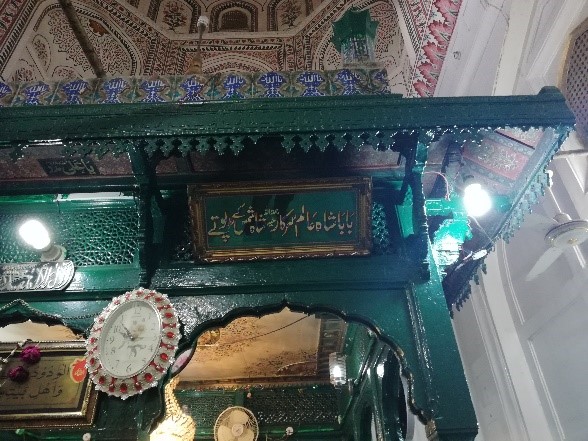
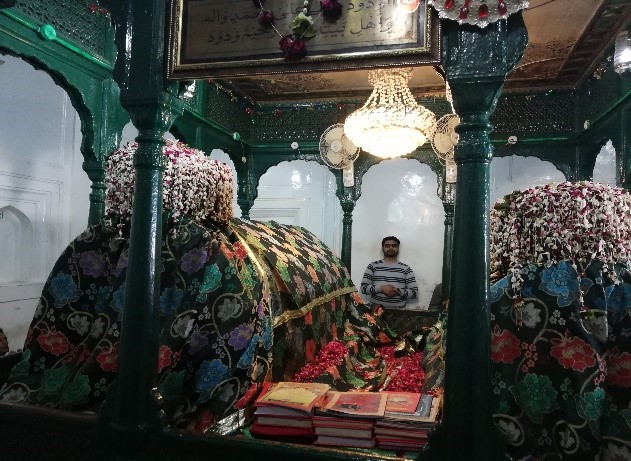
Pir Shams and Shams Tabriz
There is some confusion about the naming of the mausoleum, and it revolves around two well known Ismaili personalities. We have the Pir himself, Shams Sabzwari, who came to Multan, and a much earlier figure, Shams Tabriz, who was the spiritual guide of the Sufi, Mawlana Jalaludin Rumi. Thus the mausoleum mixes both of these personalities, as ‘Pir Shams Sabzwari Tabrizi’.
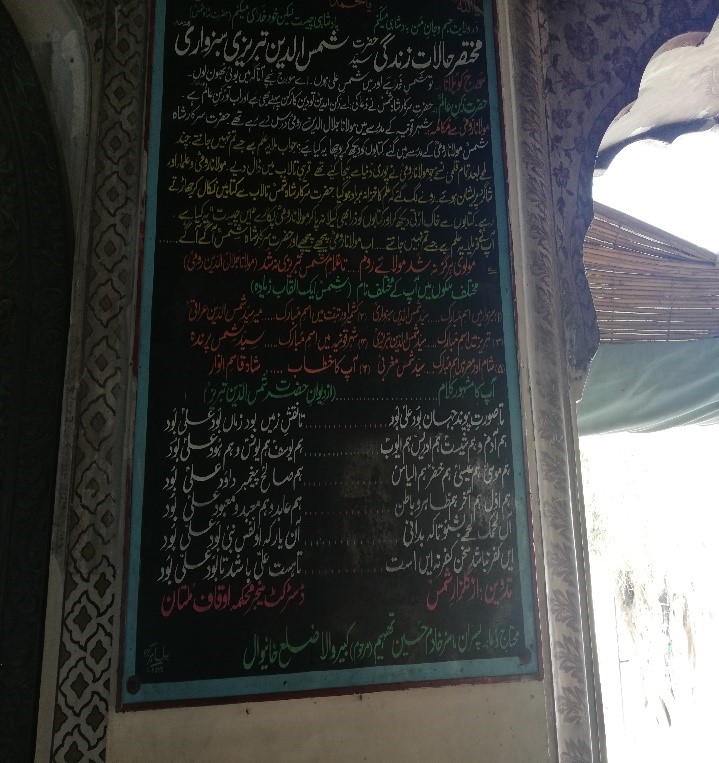
One of the boards on the wall of mausoleum gives short life incidences and refers to the Pir as ‘Hazrat Shamshuddin Tabrizi Sabzwari’. The board also tells us that Pir Shams called the sun to the earth and said, “You are sun of Allah, I am sun of Ali. Come down so I can cook the bone I have.” It also mentions about the incident when Mawlana Rumi met his master, Shams Tabriz. Shams Tabriz saw books that Rumi was carrying and asked him what they were. Rumi said it was something he wouldn’t know. Shams on hearing this dumped all the books in nearby water. Then when he took them out, all the books were dry. Rumi then asked about the incident he had just witnessed, to which Shams Tabriz replied that it was something Rumi wouldn’t know.
The board also gives the different names of Pir Shams in different countries as Syed Shamsuddin Sabzwari, Syed Shams Tabrezi, Syed Shams Parinda (bird), Mir Syed Shamsuddin Arabi etc. The board then narrates the ‘manqabat’ attributed to Pir Shams: “Ta surat o Paiwand e Jehan bod Ali bood. Ta naqshe zameen bood o zaman bood, Ali bood,” meaning “From the time the world was created, Ali was there. When earth and time were being created, Ali was there.”
Inside the compound, there are other graves attributed to relatives of Pir Shams.
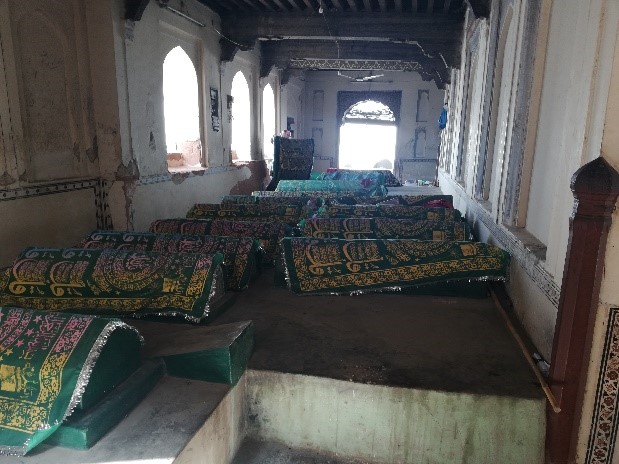
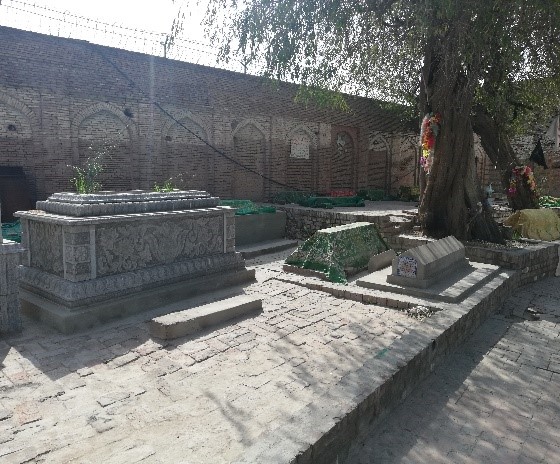
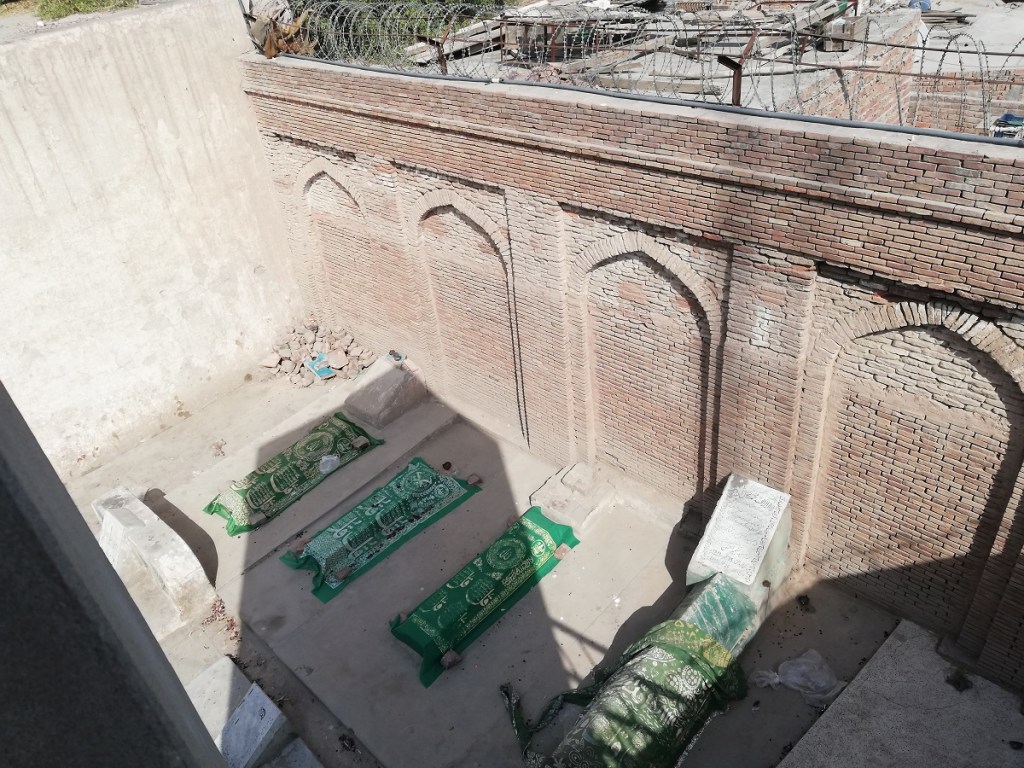
A Miracle Attributed to Pir Shams
On one of the walls as mentioned at the beginning, the custodian of the mausoleum Advocate Makhdoom Zahid Hussain Shami has placed a miracle of Hazrat Shams as follows:
“When Shams Sarcar reached the shop of a bread seller, he asked him to bake the bone of meat he had. The bread maker wasn’t too polite and refused. On this Baba Shams started talking with the sun saying: ‘You are sun of sky, I am sun of earth. With your presence, I am still without fire to cook my food’.”
“Listening to this plea, the sun increased its rays and as a result, people of Multan started dying because of extreme heat. They soon realized this was because of the presence of a pious personality whom they had hurt. They came to Baba Shams and requested for forgiveness. It is attributed to Pir Shams that in Multan, the heat now is due to this miracle of Pir.”
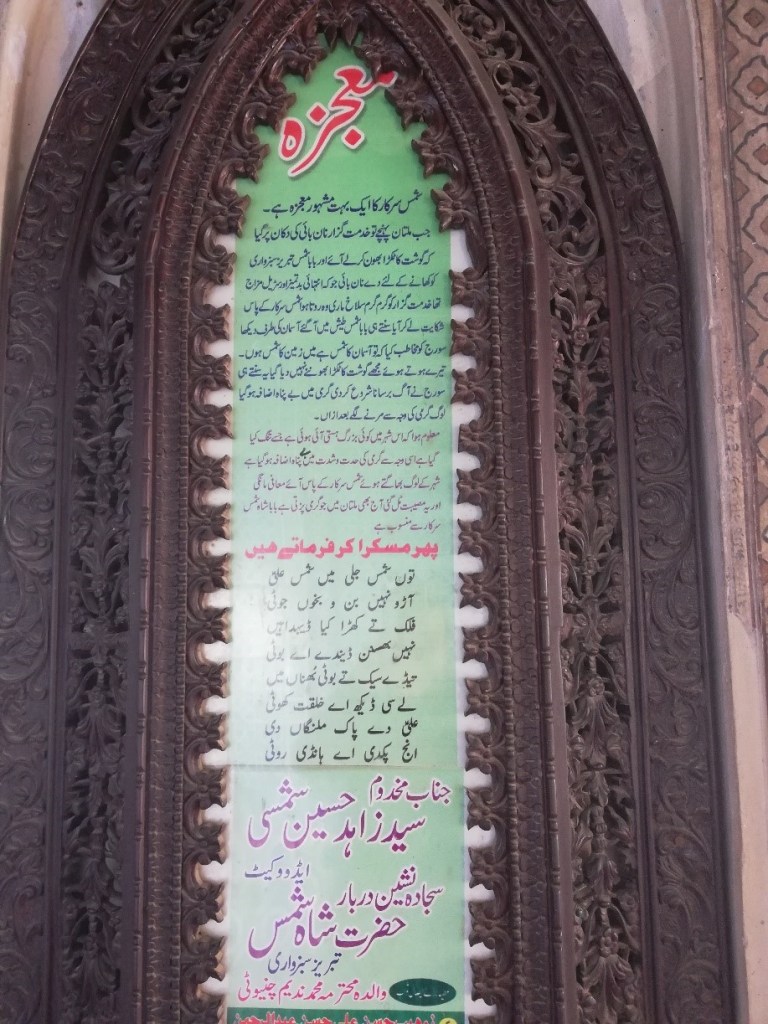
On a personal note, I should like to say that before visiting the mausoleum, my thoughts revolved around Ginans attributed to Pir Shams, including Ab Teri Mohabat Lagi and his garbis. However, the mausoleum itself focused more on the manqabats of Pir Shams Tabriz. It is interesting to learn that at times, living history is different from researched work.
Ginans attributed to Pir Shams are part of a wonderful and unique tradition being practiced by the Ismaili community globally. The teachings contained in them inspire the Ismaili Jamat around the world, and fill their hearts with deep joy and happiness.
Date posted: August 29, 2020.
____________________
We welcome feedback/letters from our readers. Please use the LEAVE A REPLY box which appears below. Please share this educational photo essay piece with your family members and friends!

Malik Mirza is CEO of Finman Group. The firm provides financial management advisory, capacity building, e learning solutions. He can be reached at malik@malikmirza.com. He blogs occasionally at wisdomfrombooks. He is an honorary Alwaez and a graduate of international waezeen training program as well. Please also see his piece The Mausoleums of the Famous Ismaili Pirs Sadardin and Hasan Kabirdin.
Editor’s note: Some readers may be wondering, “What are some of the Ginans composed by the revered Pir Shams?” We have for our readers, below, recitations of 4 well-known Ginans of the Pir, all sung by the (Late) Alwaez Shamshu Bandali Haji.
____________________
1. Recitation of Ab Teri Mohobat Lagi Composed by Pir Shams
2. Recitation of Hak Tu Pak Tun Badshah Composed by Pir Shams
3. Recitation of Hamadil Khalak Allah Sohi Vasej Composed by Pir Shams
4. Recitation of Kesari Sinh Svaroop Bhulayo Composed by Pir Shams
____________________
We welcome feedback/letters from our readers. Please use the LEAVE A REPLY box which appears below. Please share this educational photo essay piece with your family members and friends!
Before departing this website, please review our Table of Contents or visit the Home Page for links to fantastic photo essays.
Well-done and great pictures and article. Very very informative!! Thanks for sharing
I belong to Multan, currently living in Ottawa. I have been visiting Pir Shams’s shrine since my childhood. I also met Makhdoom Zahid Shamsi a few years ago. Makhdoom Zahid narrated that Pir Shams came to Multan in the company of Tagudar Khan (a grandson of Halagu or Genghis Khan), who according to an event narrated in the biography of Pir Mehr Ali Shah was converted to Islam by a Sufi Saint, who seems to be Pir Shams in view of the story narrated by Makhdoom Zahid. I wonder if there is any evidence to support this view.
Thank you very much for sharing this important piece of our history.
Very informative and well presented. Very much appreciated for all work done in providing the knowledge and education on our faith which would otherwise go ‘unknown’. You provide us much needed wisdom, and I thank you million times from the bottom of my heart. May the Almighty bless all who participated in providing this exclusive and superbly prepared documentation. Keep up the good work and “Thumbs Up”. Thank you again.
Mirza Saheb You have done a great service. I have been wanting to visit these sites. Gujarati Khojas are not always aware that the Ismaili Pirs came to Multan and Punjab. Beautiful photos with information. I was about to write to ask for Pir Sadr Din’s Durga but thoughtfully my wish was anticipated. [https://simerg.com/literary-readings/journey-of-discovery-a-recent-visit-to-the-mausoleums-of-pir-sadardin-and-pir-hasan-kabirdin/ – Ed.]
Are there any academic works on the relation of Pir Shams buried here with the Ismaili da’wa? I am wondering why IIS (Institute of Ismaili Studies) is not publishing anything about this!
Excellent work.
Thank you for sharing this amazing article by Malik Mirza. His current piece on the mausoleum of Pir Shams is captivating, as was his earlier story about the mausoleums of Pir Sadardin and Pir Hasan Kabirdin. Congratulations!
MashaAllah, thank you Malik Mirza for a great insight info and pictorial reporting and proper caption under each picture. Thank You also to Simerg Photos.
I also wonder, who monitors and looks after the entire gravesite complex!!! Is it under one of the AKDN entities, or who?
Besides me, I am sure many readers would like to know whose other graves are there?
Also, there is a mausoleum of Pir Satgur Nur in Navsari, Gujarat, India and it is completely taken over by some local (non-Ismaili) Muslim families. They call themselves family of Pir Satgur Nur..
Selected comments from Facebook (except where noted otherwise)
Yasmin Rajan: Great 👍
Pyarali Assani: Well-done and great pictures and article.🙏👍
Shaherose Shiwani: Beautiful article. Very informative. Thanks for sharing.
Azim Hamirani: Very Informative…
Rahim Mawani: I have been there once! Felt proud!!!! Such a great personality of Ismaili history!
Very very informative!! Thanks for sharing 🙏
This is a very valid point. The article is an attempt to document living history. People at the place didn’t know about the affiliation of Pir Shams with the Ismaili community. The Pir is respected as a Muslim Pir who helped people understand Islam. The mausoleum custodians or care takers are not from our Jamat. On mixing of Pir Shams Sabzwari and Shams Tabrizi I would hope a researcher may be able to respond. Oral histories get transferred rom one generation to another and name similarities can gets things mixed up. I would welcome other responses on the matter.
Following up on Malik Mirza photo essay and his response to the questions that have been raised, please see Mumtaz Tajddin new piece in Simerg https://simerg.com/2020/09/23/the-three-shams-in-ismaili-history-imam-shamsuddin-pir-shams-and-shams-tabriz/.
This piece is very informative, and Malik Mirza has educated us well through the photos and the narrative. However, it would be interesting to know how exactly the figures of Pir Shams and Shams Tabriz have become interwoven. Do the vast majority of the pilgrims consider them as the same person or do they treat them as distinct personalities? Do the visitors generally know that (the) Pir is one of the founders of the Ismaili Ginanic tradition or is that fact largely unknown. Perhaps Mirza can elaborate on that as well as our Jamat’s or institutions involvement with this monument as well as the others he wrote about earlier (i.e mausoleums of Pir Sadardin and Pir Hasan Kabirdin). Thanks to Mirza for this essay.